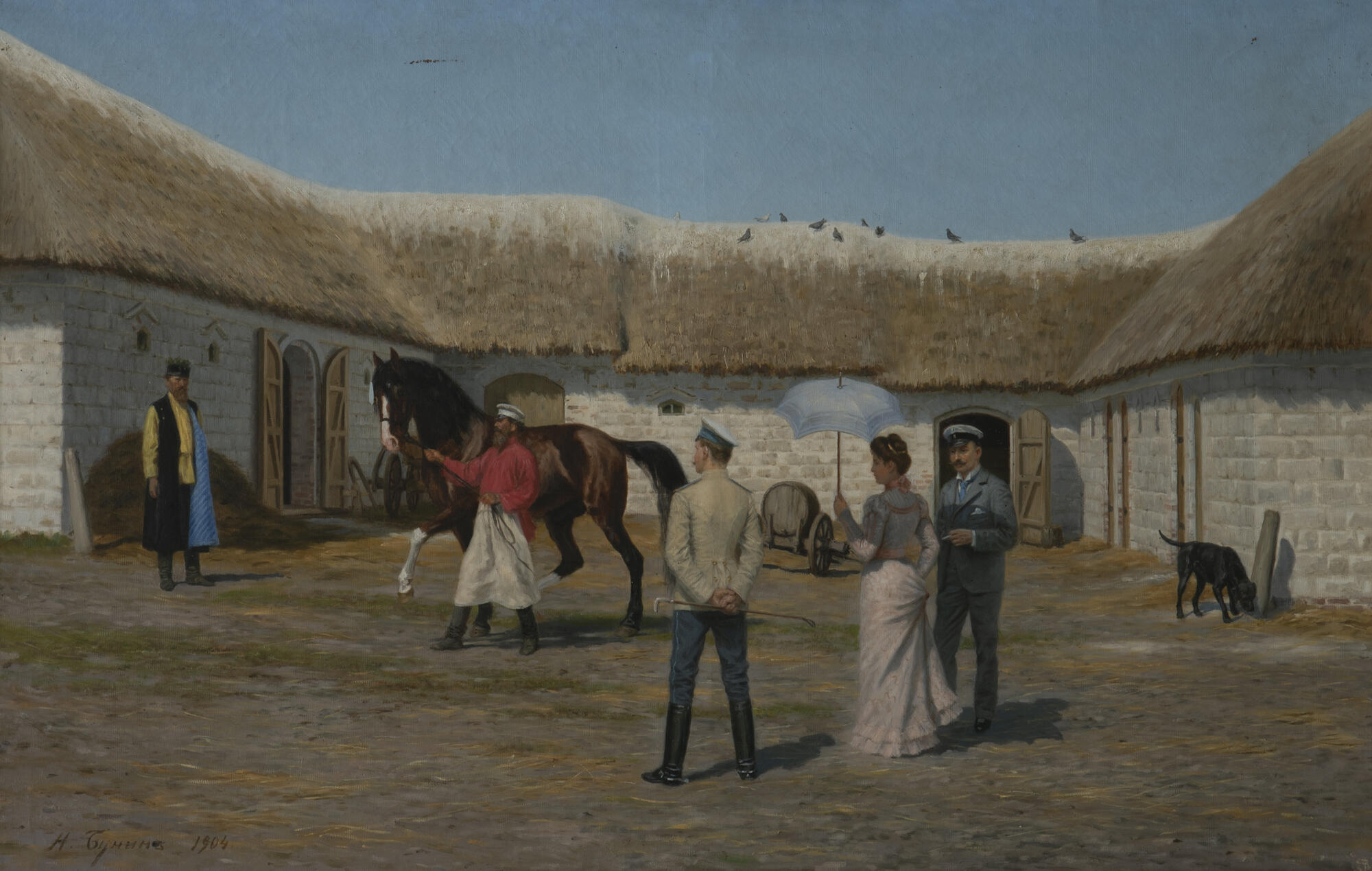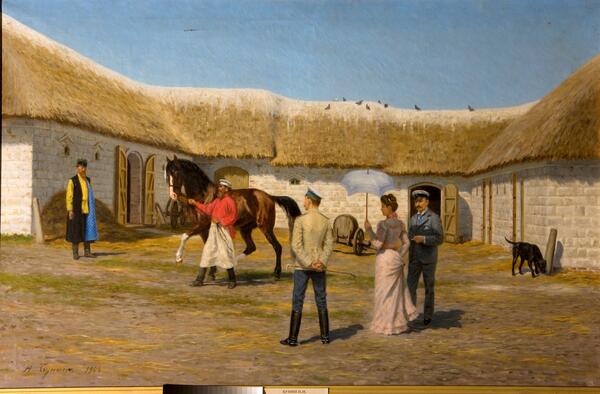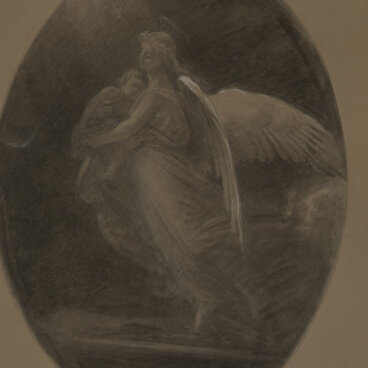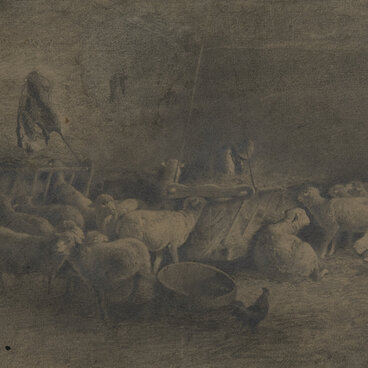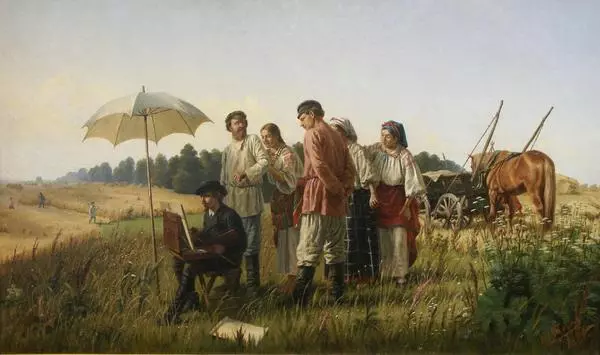The collection of the Ostrogozhsk Museum features a painting titled “Horse Inspection” by Narkiz Nikolaevich Bunin. The composition is simple: there is a large yard where a stud groom has brought out a chestnut horse. An officer and a lady inspect the horse. There were several large stud farms in Voronezh Governorate, one of them — at the Bunin estate.
Narkiz Bunin was an artist who combined his main job with a semi-professional career as an artist. Almost his entire life, he served in the military, having risen through the ranks from a warrant officer to a colonel. The painter had first-hand knowledge of the army and military life. The young warrant officer Bunin enjoyed painting but did not intend to connect his life with art. In 1881, his paintings were noticed by the head of the Life Guards Jager Regiment —Grand Duke Vladimir Alexandrovich of Russia. He advised the artist to complete courses at the Imperial Academy of Arts. Bunin became a non-matriculated student at the Academy and after receiving several commendation medals, studied in the class of battle scenes. However, later, he returned to the theme of everyday army life and depicted his comrades-in-arms.
Bunin was especially fond of painting scenes of hunting and battles, as well as animals, in particular, horses. His military paintings achieved immense popularity during the artist’s lifetime. The people in his paintings were devoid of ostentatious severity of the military or contrived decorum. The artist soon gained recognition. Narkiz Bunin became one of the most successful painters in the Russian Empire. His battle scenes were purchased by Grand Dukes for their private collections. In 1901, Narkiz Bunin retired in the rank of colonel. Although having rather poor health, he worked a lot and often exhibited his paintings.
The painting entered the Ostrogozhsk Museum before the Great Patriotic War when its collection was actively expanding. Before the Nazi occupation, this painting was evacuated along with many other canvases. Upon its return, until the damaged building of the Ostrogozhsk Museum was restored in 1957, the painting was kept at the Voronezh Art Museum (nowadays known as the Voronezh Regional Art Museum named after I.N. Kramskoy).
Narkiz Bunin was an artist who combined his main job with a semi-professional career as an artist. Almost his entire life, he served in the military, having risen through the ranks from a warrant officer to a colonel. The painter had first-hand knowledge of the army and military life. The young warrant officer Bunin enjoyed painting but did not intend to connect his life with art. In 1881, his paintings were noticed by the head of the Life Guards Jager Regiment —Grand Duke Vladimir Alexandrovich of Russia. He advised the artist to complete courses at the Imperial Academy of Arts. Bunin became a non-matriculated student at the Academy and after receiving several commendation medals, studied in the class of battle scenes. However, later, he returned to the theme of everyday army life and depicted his comrades-in-arms.
Bunin was especially fond of painting scenes of hunting and battles, as well as animals, in particular, horses. His military paintings achieved immense popularity during the artist’s lifetime. The people in his paintings were devoid of ostentatious severity of the military or contrived decorum. The artist soon gained recognition. Narkiz Bunin became one of the most successful painters in the Russian Empire. His battle scenes were purchased by Grand Dukes for their private collections. In 1901, Narkiz Bunin retired in the rank of colonel. Although having rather poor health, he worked a lot and often exhibited his paintings.
The painting entered the Ostrogozhsk Museum before the Great Patriotic War when its collection was actively expanding. Before the Nazi occupation, this painting was evacuated along with many other canvases. Upon its return, until the damaged building of the Ostrogozhsk Museum was restored in 1957, the painting was kept at the Voronezh Art Museum (nowadays known as the Voronezh Regional Art Museum named after I.N. Kramskoy).
